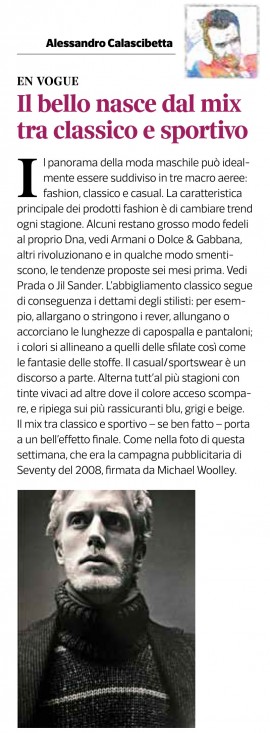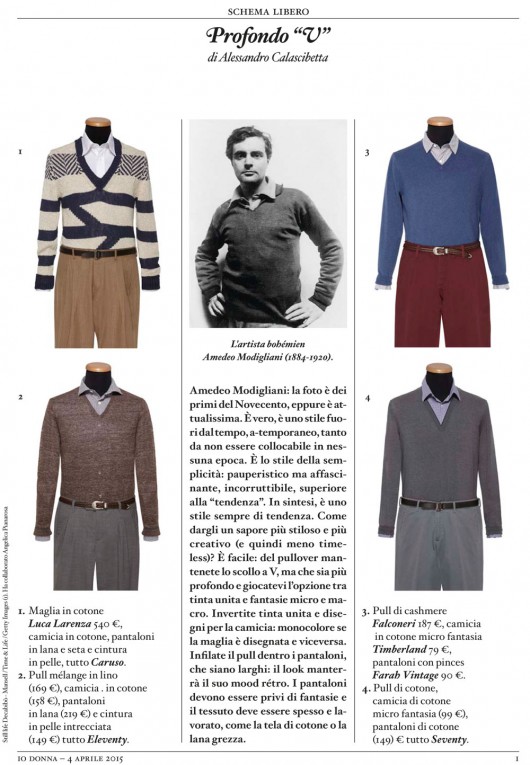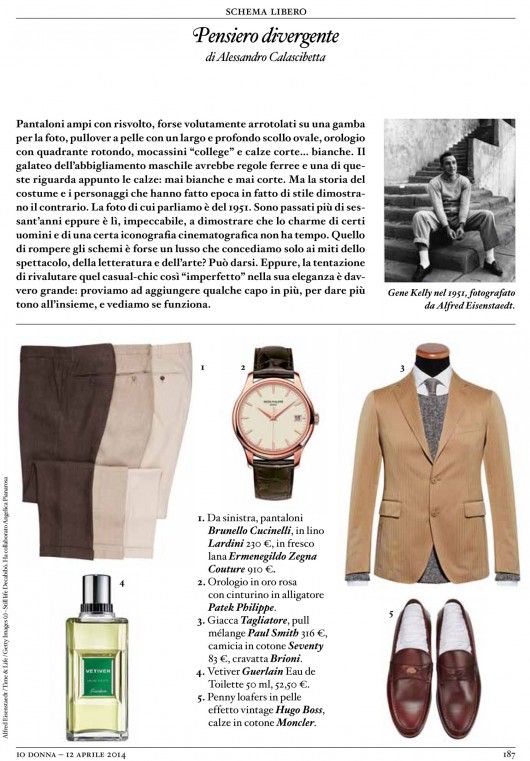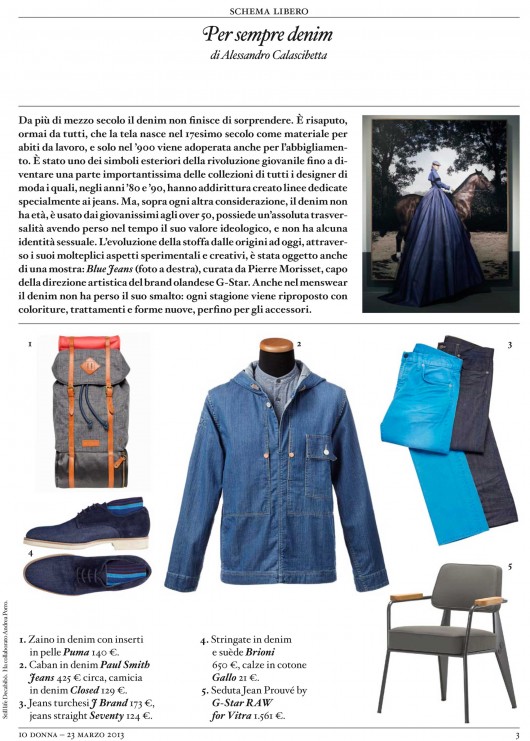SETTE MAGAZINE EN VOGUE IL BELLO NASCE DAL MIX TRA CLASSICO E SPORTIVO
Beauty as the result of classic plus casual. The menswear scenery can be ideally divided into three areas: fashion, classic and casual. The main feature of fashion clothing is to change trend every season. Some brands stay true to their DNA, like Armani or Dolce&Gabbana, others revolutionize, and sometimes deny, the trends proposed six months before. Like Prada or Jil Sander. Classic clothing accordingly follow the designers’ decrees: for example they enlarge or tighten the lapels, lenghten or shorten jackets and trousers; colors and prints are aligned with the trends of the fashion shows. The casual/sportswear is a completely different subject. It alternates, at most, seasons dominated by bright colors with others dominated by more reassuring shades, like blue, grey and beige. The mix between classic and casual – if it’s well done – leads to a beautiful final effect. Like in this picture, that was the Seventy 2008 adv campaign, by Michael Woolley.










